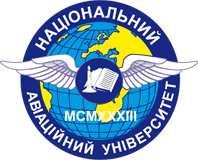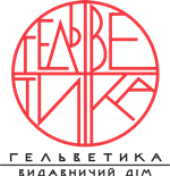INNOVATIVE MEANS OF INTEGRATION OF ART OBJECTS INTO INTERIOR DESIGN AS A WAY OF ENHANCING THE AESTHETICS OF THE ARCHITECTURAL ENVIRONMENT
DOI:
https://doi.org/10.32782/uad.2023.4.9Keywords:
Art object, Innovative means of integration, Interior, Design, Architectural space.Abstract
The purpose of the article is to analyze and define innovative means of integrating art objects into interior design, which is one of the most relevant ways of implementing modern practices in the field of design. The article considers the main innovative means of integrating art objects in interior design, as an opportunity to improve the aesthetics of the architectural environment. The novelty of the article lies in the study of new trends in the development of artistic and figurative filling of the modern environment, which is caused by the rethinking of the use of art objects in the context of certain innovative means of their integration into the interior space. In the context of solving ideological and artistic problems of the general methodology of interior organization, as a result of the analysis, the main innovative means of integrating art objects into interior design were determined and structured in order to increase the level of aesthetics of the architectural environment. The results of the research are presented and confirmed in a visual table developed by the authors of the article, which demonstrates typical examples of modern practices of art object integration into interior space, based on innovative means. The effectiveness was evaluated and illustrative examples were presented, which confirm the importance and advantages of using certain innovative means of integrating art objects into interior design. Conclusions. In the context of the research, it was found that the use of innovative means of integrating art objects into interior design significantly accelerates and simplifies the process at all stages of design, increasing the efficiency of the practical work of designers, artists and architects. It was determined that the use of innovative means of integrating art objects into interior design is an effective way not only to improve the aesthetics of the architectural environment, but also to create a special and unique visual atmosphere of the ideological and artistic image of the space.
References
Cumming, R. Art: A Visual History. DK, 2015.
Beigie, D. (2005). Computer-Generated Fractal Art. National Council of Teachers of Mathematics (NCTM). Vol. 10(6), Р. 262–269.
Acici, F. K., & Kulak, F. (2015). Intersection of design and art in the eyes of interior architecture students. Global J. of Design Art and Education (GJDAE). Vol. 5(2), Р. 54–60. DOI: https://doi.org/10.18844/gjae.v5i2.245.
Pylypchuk, O. & Polubok, A. (2022). The color of the surface of the Art object as a means of harmonizing the modern architectural environment. Landscape Architecture and Art. Vol. 21(21), Р. 59–67. DOI: https://doi.org/10.22616/j.landarchart.2022.21.06
Косаревська Р., Левченко О. Переосмислення класичного мистецтва: дослідження сучасного підходу до виявлення форми мистецтва (живопис, скульптура, архітектура) та його реінтерпретація у суспільстві. Актуальнi питання гуманітарних наук, 2023. №. 66. Т. 2. С. 39–44.
Ясенєв О., Дубовий О. Сучасні тенденції використання творів образотворчого мистецтва в інтер’єрі приміщень. Деміург: ідеї, технології, перспективи дизайну, 2021. № 4. Т. 2. С. 226–235.
Afatara, N. (2018). The Creation of Contemporary Artwork. Third International Conference of Arts, Language and Culture (ICALC 2018). Advances in Social Science, Education and Humanities Research (ASSEHR). Vol. 279, Р. 52–59. DOI: https://doi.org/10.2991/icalc-18.2019.9
Suzen, H. N. (2021). Evaluation of Contemporary Art in terms of Conceptual Structure and Interpretability. J. of Educational Sciences, Vol. 13(2), Р. 447–460. DOI: https://doi.org/10.15345/iojes.2021.02.008
Building Standard WELL (2023): веб-сайт: URL: https://www.wellcertified.com
Будинки і споруди. Готелі: ДБН В.2.2-20:2008, № 312. Зміна № 1. [Чинний від 2008-11-20]. – К: Мінрегіон України, 2018. – 18 с.
DK. How Stuff Works. How Technology Works: The Facts Visually Explained. DK, 2019.
Jayathissa, P., Quintana, M., Abdelrahman, M., & Miller, C. (2020). Humans – as – a – Sensor for Buildings – Intensive Longitudinal Indoor Comfort Models. Buildings. Vol. 10(10), Р. 1–22. DOI: https://doi.org/10.3390/buildings10100174
Xiao, H. (2021). Application of Virtual Reality in the Teaching of Interior Design. J. of Contemporary Educational Research. Vol. 5(9), Р. 1–4. DOI: http://ojs.bbwpublisher.com/index.php/JCER
Полубок А. П. Інтерактивний алгоритм «Perception» // Свідоцтво про депонування результату інтелектуальної діяльності № 229–РІД/Ук 2021. – К: Державна науково-технічна бібліотека України, 2021 р. – 23 с.
Pylypchuk, O. D. (2023). Development of an innovative means of harmonizing the color scheme of works of fine art and interior environment to create a comfortable space for human existence. Baltija Publishing. Р. 380–414.
DOI: https://doi.org/10.30525/978-9934-26-322-4-18.
Wang, Q. (2018). Analysis of Interior Space Design and Visual Artistic Effect 1st International. Conference on Education Art Management and Social Sciences, Kuala Lumpur, Malaysia (EAMSS 2018). Clausius Scientific Press. Р. 362–366. DOI: https://doi.org/10.23977/eamss.2018.075







